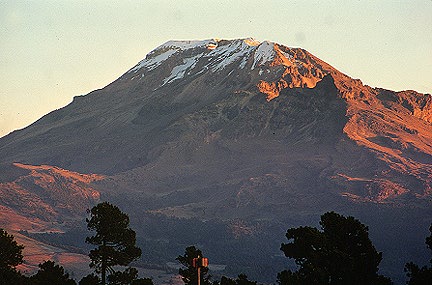
Iztaccihuatl is about 40 miles (60 km) southeast of Mexico City. It is in the Trans-Mexico volcanic belt. Iztaccihuatl is a stratovolcano made of layers of viscous lava flows, flow breccias, and tephra. Andesite and dacite are the common rock types.

Sources of Information:
Photographs copyrighted and provided by Steve O'Meara of Volcano Watch International. Nixon, G.T., 1989, The geology of Iztaccihuatl volcano and adjacent areas of the Sierra Nevada and Valley of Mexico: Geological Society of America Special Paper 219, 58 p.
Simkin, T., and Siebert, L., 1994, Volcanoes of the World: Geoscience Press, Tucson, Arizona, 349 p.
White, S.E., Iztaccihuatl, Mexico: Volcano News, 23, p. 1-3.